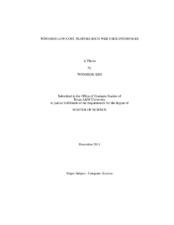| dc.description.abstract | Web-based user interfaces are used widely. They are replacing conventional desktop-based user interfaces in many domains and are emerging as front-ends for online businesses. The technologies for web user interfaces have advanced considerably to support high-quality user interfaces. However, the usability of web interfaces continues to be an issue. We still encounter web forms where basic interactive features are missing or work unexpectedly. User interface is a costly and error-prone area of software construction. This is particularly true for web user interfaces. They are typically implemented with fewer reusable components on programmers' toolboxes than conventional user interfaces built using user interface frameworks such as Windows Forms, Cocoa, and Qt. Consequently, web interface programmers tend to struggle with low productivity, or low quality and high defect rates. This thesis focuses on property models, a declarative approach to programming user interfaces. In this approach, common user interface behaviors are automatically derived from the specifications of the data manipulated by user interfaces. The approach aims to reuse user interface algorithms that are common across interfaces and allow the programmers to focus on application-specific concerns. This thesis work is a part of project "hotdrink," a JavaScript implementation of the property model system, which has the goal of providing the benefits of property models for web interfaces. This thesis builds on previous work on property models, and adds to it three reusable help and convenience features, which can be especially useful for web forms. In particular, this thesis describes the generic mechanisms of the following user interface features: (1) validating data coming from a user and presenting useful messages that help the user to fix errors, (2) controlling the flow of data through "pinning," and (3) canceling the user's previous actions through undoing. The main contributions of the thesis are the mechanisms and the software architecture that enable implementing these behaviors in a reusable manner. This thesis also presents several examples to illustrate the benefits of the proposed mechanisms. | en |


